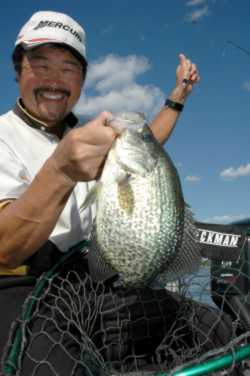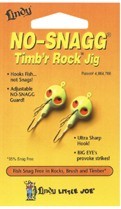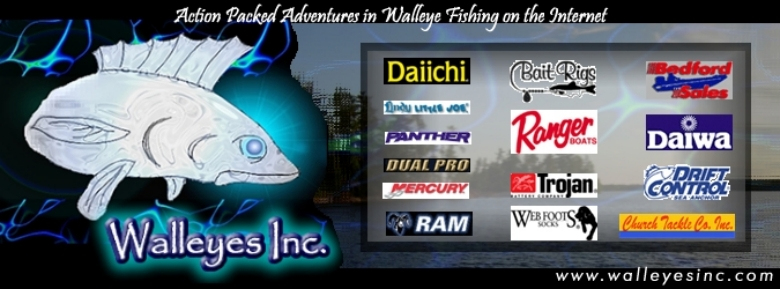Try mixing two main ingredients in order to cook up a great
early-season crappie outing. Start with warm water (about 50
degrees F or higher) and add cover like wood or weeds.
Warm water is the spark that ignites the food chain. As temperatures
creep upward, microscopic plankton start to grow, which attracts
small baitfish. Crappies may eat either and they are driven
to the shallows (first simply for the warming water, then to
spawn). Wood offers cover and security. Shallow wood transmits
warmth from the sun to the surrounding water. Emerging weeds,
if present, offer cover and give off oxygen, another factor
vital to the food chain.
The warm water and cover combinations yield big crappies, whether
it’s in North Carolina with Lindy Pro Staffer Randy Pope
or Illinois/Kentucky with guide Steve Welch or Wisconsin with
guide Greg Bohn or Minnesota with Brian Brosdahl. Anywhere you
go, armed with this recipe, it won’t take long to figure
out where to begin the search for crappies on any body of water.

Pro fisherman Ted Takasaki with visual proof that he
knows spring crappies! Thill floats, small Lindy jigs
and a good idea of where to look is the recipe for slab
success |
Underwater Brush in Reservoirs
In reservoirs early in the year, Pope targets brush on
turns in the channels in no more than 10 to 15 feet of
water because he uses tiny 1/32nd-ounce Little Nipper
jigs on light line. Fishing deeper would just take too
long, because of the time it takes the tiny jigs to fall.
| On tough days, Pope will use snag-less jigs like
a Lindy NO-SNAGG Timb’r Rock Jig in order
to try plucking crappies hidden deeper in the trees. |
 |
Pope knows where underwater brush piles are located because
he and friends put them there. But, you can find natural
or artificial brush piles like Welch does. Cruise underwater
shoreline breaks (ledges) with a GPS and sonar. For this
technique, sonar with side-imaging technology is indispensable,
such as that found on Humminbird units. The brush piles
and cribs stand out. Simply use the cursor to enter GPS
coordinates for each brush pile you find.
Welch has seen crappie pros cash checks after they ‘pre-fish’
for a tournament on unfamiliar water by simply cruising
with Humminbird’s side-imaging/GPS technology and
returning the next day to catch a winning stringer. |
Welch uses a low-viz braided line in 8-pound-test breaking strength
(3-pound diameter) to tightline a larger tube jig right over
the top of piles in 20 feet of water. Having a transducer cone
and sonar screen on the front deck allows him to put a tube
jig right over the top of the trees where the biggest crappies
lurk. The braided line lets him feel the branches and straighten
out the jig hook to get free when he snags.
Warming Shallows
As the water warms up more, the crappie chase in reservoirs
becomes a shallow-water sport. A contour map makes it easy to
spot shallow feeder creeks, where the water will warm up first.
Welch travels far into tiny channels that are just wide enough
for him to turn a boat.
“(The water in the narrow and shallow channel) might be
just one degree warmer, but it makes all the difference,”
Welch says. “The fish can feel it.”
Don’t worry about boat congestion– you’ll
usually be the only one there. You can even leave the boat at
home if you want. Shore anglers who find a path beside the right
creeks can cook up a mess of springtime crappie as easily as
anyone on the water.
And at this time of year, crappies can be caught there all day
long.
“These fish are very, very spooky, though,” says
Welch.
As a result, a slip-bobber is a must to cast a bait to fallen
wood along the shore.
Lindy pro Pope uses a 1/64th-ounce Little Nipper jig under a
Thill float to cast to fallen timber in the shallows.
Case Study: Northern Waters
Farther north, fish go on a feeding binge just after ice-out.
Brosdahl and Bohn hunt warmer water in shallow bays, starting
on the northwest side of the lake.
Be quiet and scan the water for weeds and signs of fish action
near the surface.
Brosdahl uses a 6-foot ultralight rod, 3-pound-test line, a
slip-bobber rig with a Thill Pro Series float and a Little Nipper
jig or Genz Bug. He adds a small rubber-core sinker if more
weight is needed. He adds a wax worm, maggot, or small minnow
as live bait. A small plastic bait, like a Techni-Glo Tail,
is often enough by itself when the action is fierce.
Is color important? Brosdahl thinks so. He likes red glow, blue
glow, green and chartreuse Genz Bugs and black or white Little
Nippers.
Fish 4 to 6 feet deep and set the bobber with the jig suspended
just a foot or so below the surface, to see if crappies are
cruising what is often the warmest water. If you don’t
get bit, gradually work deeper. Where anglers are allowed two
rods, try one deeper and the other shallow and move toward the
middle.
Cast beyond the weeds and reel the slip-bobber back over the
top of the vegetation. Target the wood, too, where you can find
it.
Bohn targets bays where ice anglers caught crappies before ice
out. The best ones have at least 10 feet of water and feature
sand bars, points and flats where the crappies will soon lay
eggs. Vegetation, even dead weeds, and wood are a plus. They
radiate heat from the sunlight. Protected areas are key, also,
because warm surface water can be a degree or two warmer, enough
to make a difference at this time of year.
If fish aren’t shallow, you might be there before the
sun has done its work to warm the water after a chilly early
spring night. If you don’t find the fish shallow, try
fishing a little deeper.
Bohn uses Lindy ice jigs in colors like white and glow, first
under a small Pro Series slip bobber. Use wax worms or a small
minnow hooked in the tail to keep it active longer.
On large flats with timber or weeds, don’t anchor. To
cover more water, try drifting Weighted Pro Series bobbers.
Cast them into the wind so the wind drifts the bait back to
you.
Crappies move toward the shore as water temperature moves into
the mid-50s F. Check depths of 6 feet, 4 feet, and 2 feet near
dark sandy bottoms. Target fallen timber, submerged stumps and
flooded root systems.
Crappies will chase baits on warm days. That’s when Northwoods
anglers use methods resembling Pope’s southern tactics.
Cast a Little Nipper or another small jighead dressed with a
small 2-inch Munchies soft plastic grub and slowly swim them
back to the boat.
Selective harvest becomes important as we become better fishermen.
Take the smaller ones and keep only as many as you’ll
eat at one meal.
|

